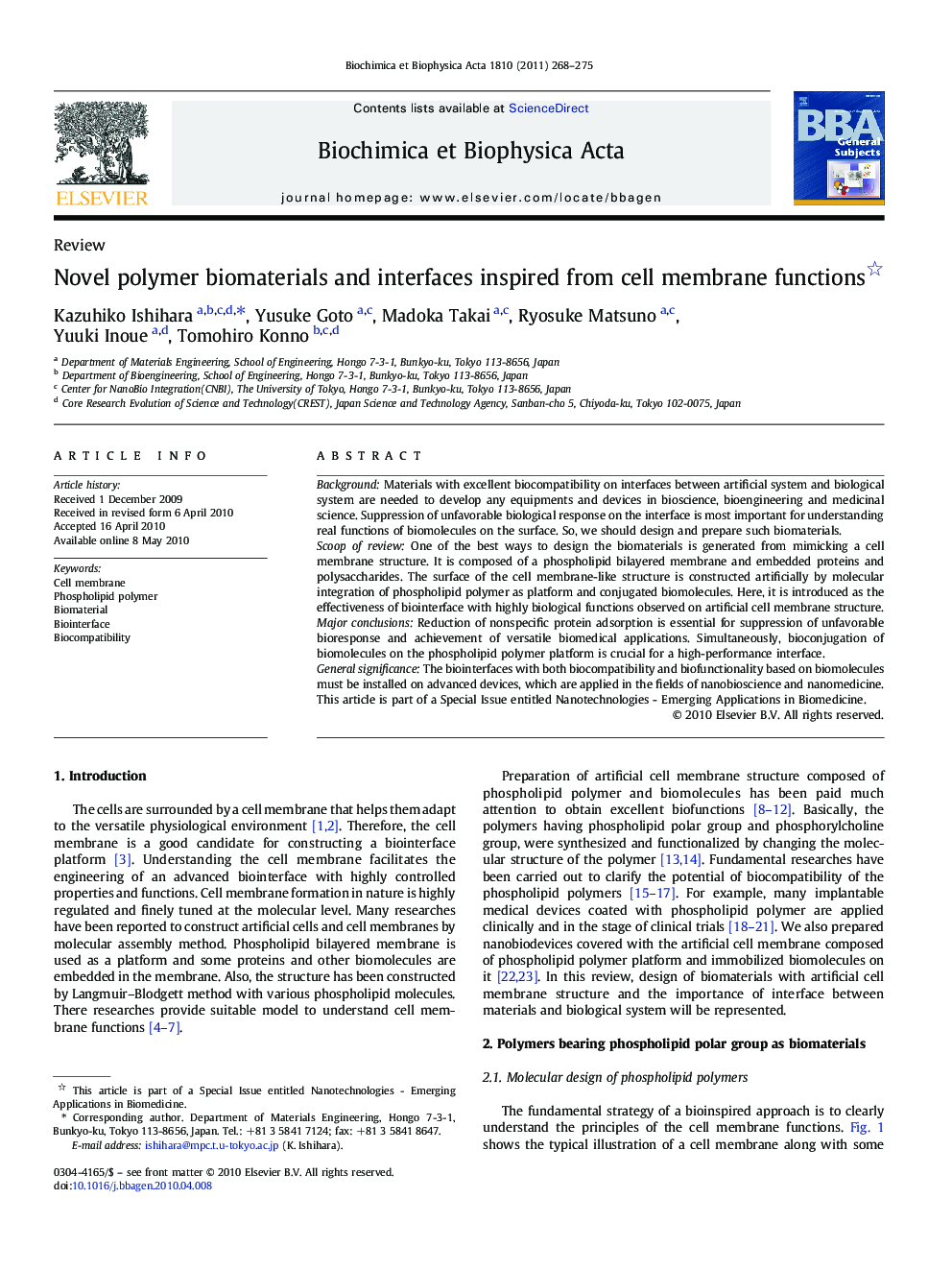| Article ID | Journal | Published Year | Pages | File Type |
|---|---|---|---|---|
| 1947856 | Biochimica et Biophysica Acta (BBA) - General Subjects | 2011 | 8 Pages |
BackgroundMaterials with excellent biocompatibility on interfaces between artificial system and biological system are needed to develop any equipments and devices in bioscience, bioengineering and medicinal science. Suppression of unfavorable biological response on the interface is most important for understanding real functions of biomolecules on the surface. So, we should design and prepare such biomaterials.Scoop of reviewOne of the best ways to design the biomaterials is generated from mimicking a cell membrane structure. It is composed of a phospholipid bilayered membrane and embedded proteins and polysaccharides. The surface of the cell membrane-like structure is constructed artificially by molecular integration of phospholipid polymer as platform and conjugated biomolecules. Here, it is introduced as the effectiveness of biointerface with highly biological functions observed on artificial cell membrane structure.Major conclusionsReduction of nonspecific protein adsorption is essential for suppression of unfavorable bioresponse and achievement of versatile biomedical applications. Simultaneously, bioconjugation of biomolecules on the phospholipid polymer platform is crucial for a high-performance interface.General significanceThe biointerfaces with both biocompatibility and biofunctionality based on biomolecules must be installed on advanced devices, which are applied in the fields of nanobioscience and nanomedicine.This article is part of a Special Issue entitled Nanotechnologies - Emerging Applications in Biomedicine.
